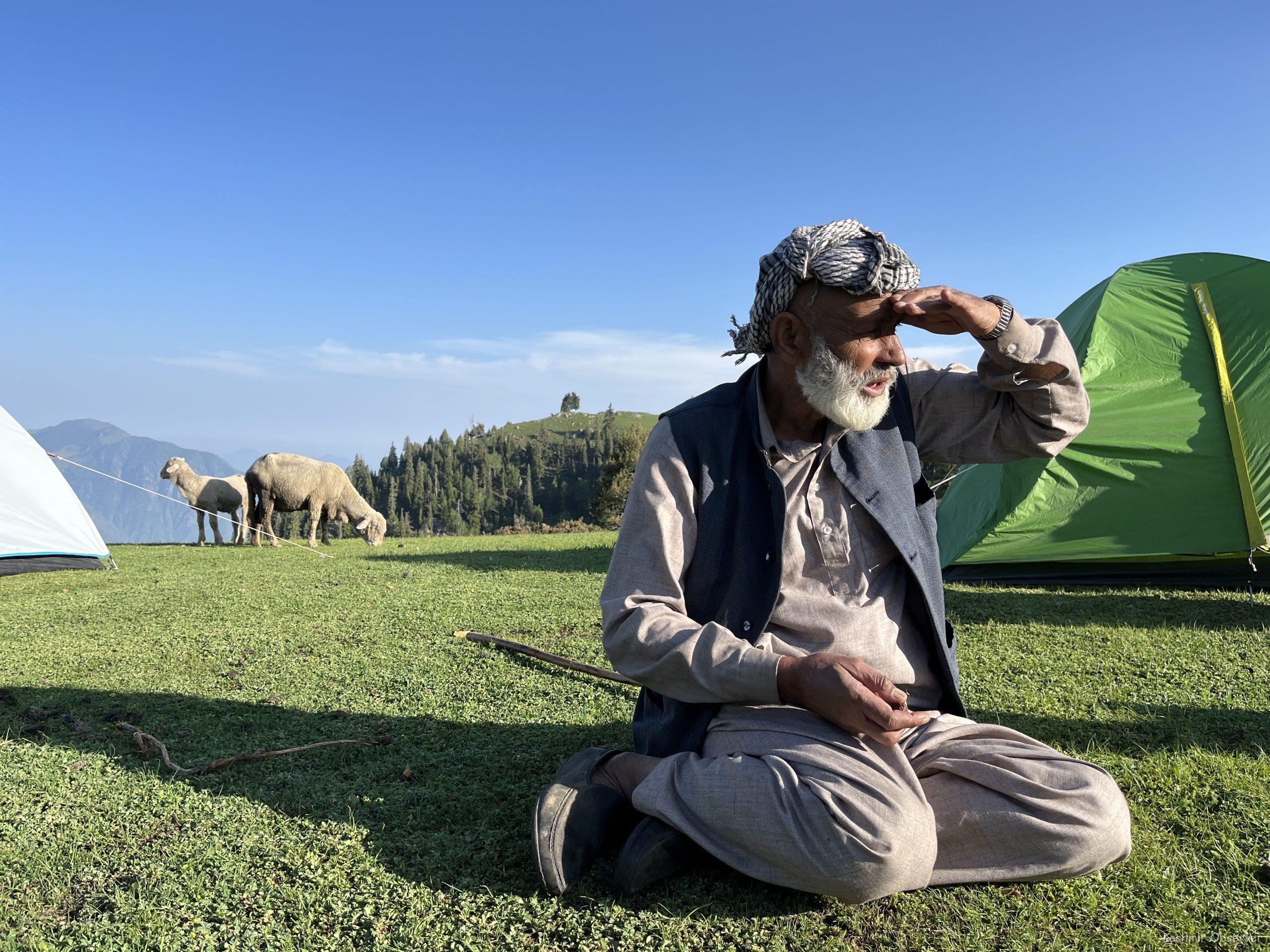
Parvaiz Bhat
Lal Marg (Ganderbal)- Hakam Deen of Rajori has been an annual visitor of Kashmir’s highland pastures for the past 50 years. Deen, 68, acknowledges that spending over four months annually in highland pastures is full of challenges. But his profession, he says, has not only accrued benefits to him and his family, but has kept them healthy and disciplined as well. He also realizes that a lot of people from nomadic community have given up the profession in recent years, but argues cogently enough that the trend of nomads giving up the profession will reverse soon considering the lack of other economic and employment opportunities.
“It is a matter of a few years only. These meadows will again be filled with Bakarwals and their livestock,” Deen tells Kashmir Observer confidently while sipping tea outside his tent in Lal Marg, a meadow in the Ganderbal forests.
“Around 25 years back, we could only see nomad families here – in huge numbers. Tourists like you would hardly come here,” he recalls. “But, sadly, thousands of families have stopped rearing livestock,” Deen says. According to him, people from nomadic community in recent years have given up their traditional livelihoods because they thought they can live a comfortable life if they start their own small businesses and even work as laborers.
“But, I know many families who rue their decisions now,” Deen says. Thankfully, Deen says, the idea of quitting nomadism has never crossed his mind. “I have always enjoyed it. It is indeed very tough to live in these mountains, but we also relish staying here,” he says and quips: “Two toughest professions in the world are those of the nomads and the army men.” Both, he says, are mostly on tenterhooks.
“Right now it is sunny and we are sitting here without any fear. But, when the weather worsens, these places become so dangerous. From wind, lightning, hailstorm and thunderstorms all weather related dangers loom around us,” he says and adds, “but, thankfully we have always averted tragedies – may be God loves our lifestyle.”
Every year, it takes Deen and other nomads from Rajori and adjoining districts upto 15 days to travel to the highland pastures in Kashmir along with their livestock and as many days in the return journey to Rajori.
On May 25, four nomadic pastoralists or Bakkarwals were killed after a tree fell on their tent during a wind storm in a forest in south Kashmir. The pastoralists had stopped over for a night in the forest as part their migration journey to alpine pastures where thousands of nomadic pastoralists take their livestock for grazing during summer months annually.
Weeks before the May 25 incident, several Bakkarwal families had
“We have lost our cattle, the sole source of our livelihood, in the snowstorm. A majority of the remaining cattle have fallen sick because of harsh weather and starvation,” Khushal Chowdhary

These fresh disasters are among hundreds of disasters being suffered by nomadic pastoralists in Himalayas annually. During their annual months-long stay in summers in the Himalayan highlands, they often become v
Bakkarwals are one of the largest ethnic groups in Jammu and Kashmir after Kashmiris, Gujjars and Dogras. Numbering around half a million, they migrate to different alpine pasturesacross Himalayas.
While their hardships were limited to long treks in the past, the nomadic pastoralists say that in recent years their hardships have compounded.
Pastoralists say that forest pastures are increasingly becoming out of bounds for them and they face many hardships while migrating to the pastures and returning from them. Every year, it takes about two weeks for them to move their livestock to the pastures and as much time for the return journey.
Nomads only know the art of grazing livestock which involves their annual migration to mountain pastures. But, Deen and most of his fellow nomads say, herding livestock has now become very difficult for them.
“When I was young, migrating to pastures and staying there for months used to be much easier and exceptionally enjoyable for us. But, now we face many challenges,” says Deen.
“We are not allowed to make small mud-houses during our stay in pastures. Also, the forest department has created enclosures in forests which exposes us to the threat of wild animals and also creates roadblocks for us when we move our herds for one place to another.” According to Deen, dogs are the best friends of nomads in forests. “They take good care of us and our livestock,” he says.
Follow this link to join our WhatsApp group: Join Now
Be Part of Quality Journalism |
Quality journalism takes a lot of time, money and hard work to produce and despite all the hardships we still do it. Our reporters and editors are working overtime in Kashmir and beyond to cover what you care about, break big stories, and expose injustices that can change lives. Today more people are reading Kashmir Observer than ever, but only a handful are paying while advertising revenues are falling fast. |
| ACT NOW |
| MONTHLY | Rs 100 | |
| YEARLY | Rs 1000 | |
| LIFETIME | Rs 10000 | |












